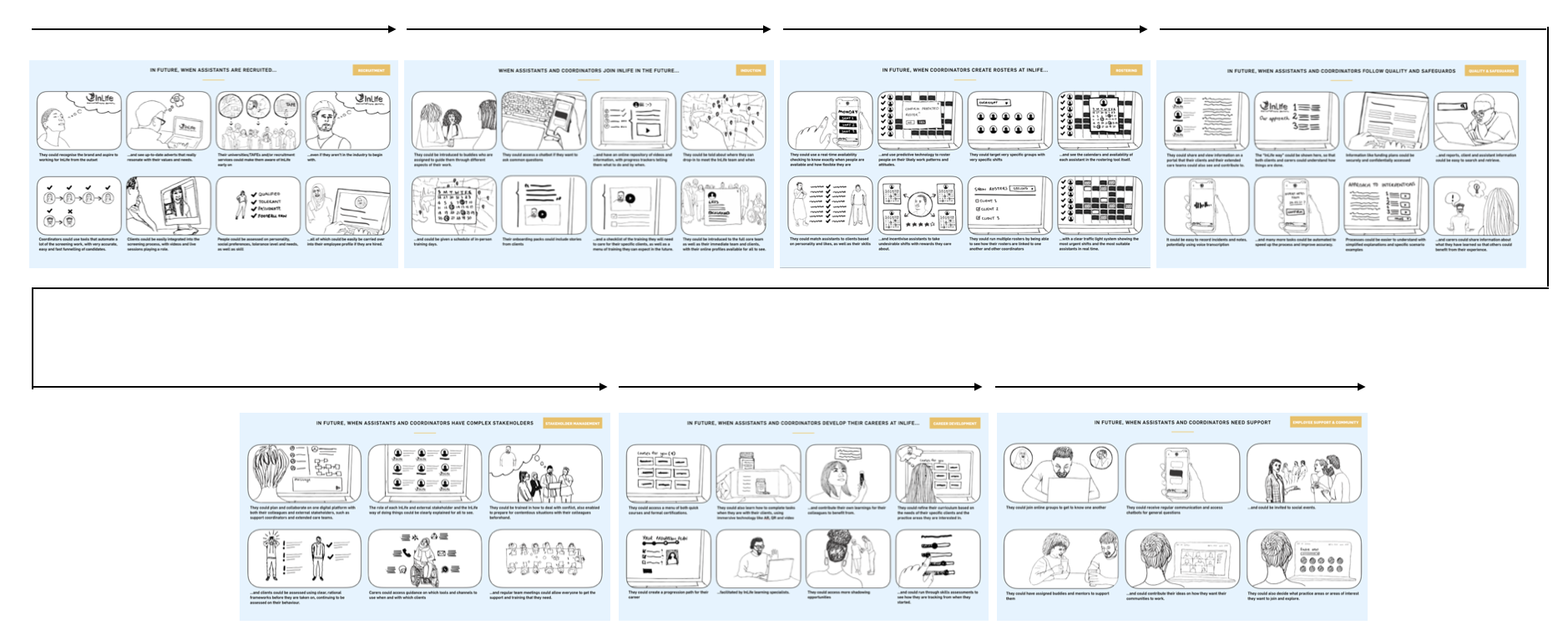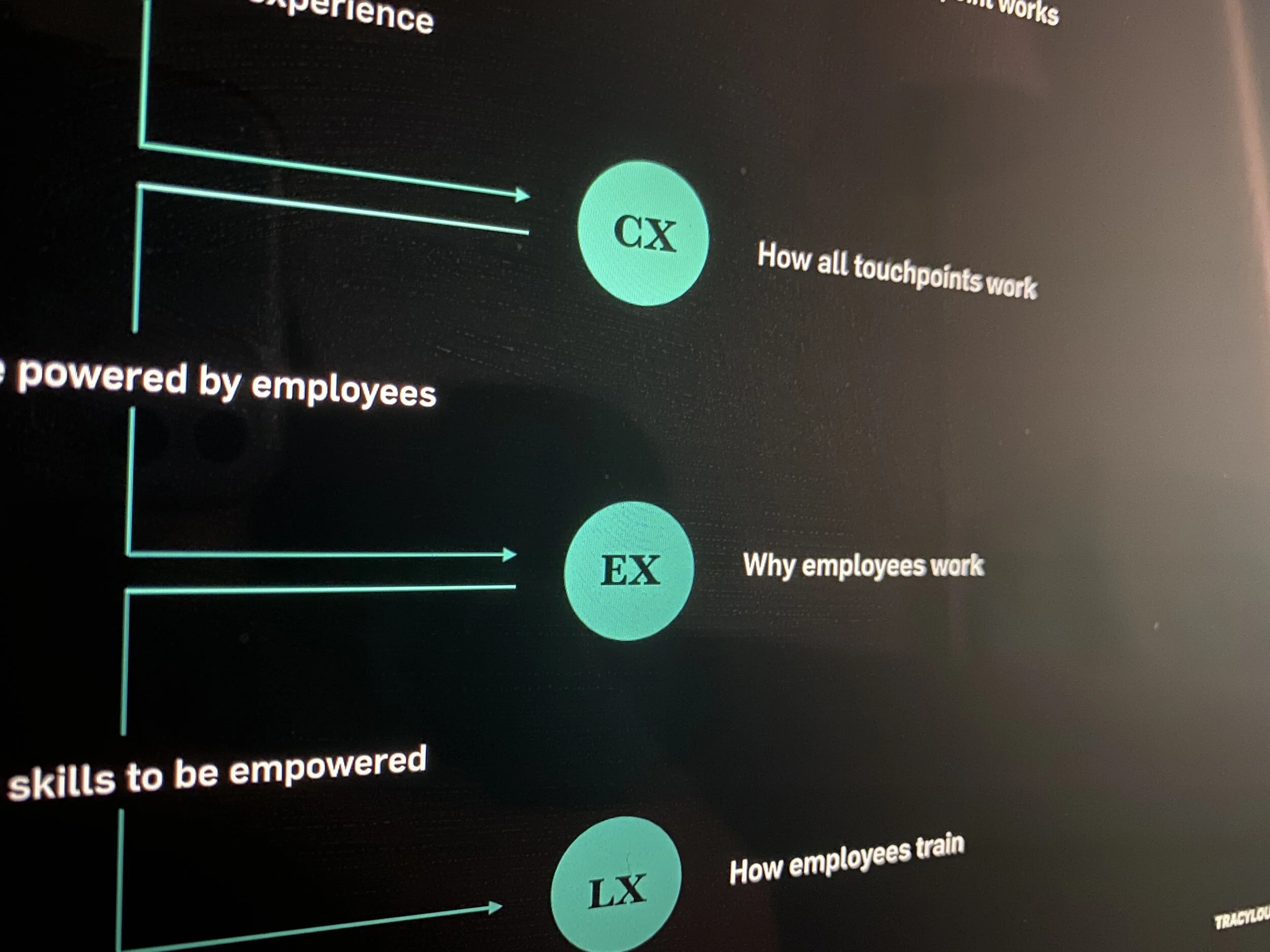Using service design to create solutions for disability support workers and their clients
It’s rare that service designers and organisational strategists get to work with a healthcare organisation that is big enough to have a substantial impact on their audience but small enough to be able to move on a strategy without bureaucratic delays. So, it has been a privilege to work with a local disability support provider since December 2020.
The organisation in question offers high-quality personal care and disability support for independent living. They help their clients to choose when and how they’d like support, so that they can get on with living their lives. The organisation specialises in providing support at home and within the community and builds teams tailored to every client. Clients have a variety of disabilities and require a broad range of support; catering to such diverse needs is not an easy undertaking.
Challenge
Although the internal stakeholders have a very accurate view of how their organisation works, new starters need to understand how this complex service works, as quickly as possible. As the organisation scales, there will be more of a need for this kind of a holistic summary.
Approach
I have been helping them to create that view by developing current and future state service blueprints. The purpose of these documents is to connect customer experiences to the infrastructure that supports them (processes, technology, people, projects), enabling an organisation to deliver the best possible service to their clients and their people collectively and in the most effective way.
Creating a current state service blueprint involves mapping the phases of the experience, actions, processes, pain points, needs, channels, touchpoints, departments, initiatives, influencers, technology and systems, while showing how they are all connected. We did this for 3 key audiences; clients, assistants (the people delivering the care) and coordinators (who facilitate teams and the care plan). Finding and connecting the information involved starting with existing documentation and having multiple working sessions with the SMEs in the business. The informational gaps informed qualitative research with the people who deliver and coordinate care for a range of clients with highly varied needs.
For any service designer who hasn’t had the privilege of working with healthcare organisations, you should know that first-hand accounts of the very human moments that occur between clients and their supporters often reinvigorate your belief in humanity. Even as a researcher, who is tasked to remain objective, you cannot help being touched by the beautiful relationships that are often built in healthcare scenarios. This research was no different and also enabled me to understand the depth of purpose that attracts people to work in this sector.
Combined with some very smart client segmentation performed by the CEO, the synthesis and research insights generated a holistic view of the current day experience. By February, we had client segments, great additional employee insights, a blueprint for each audience and a unifying process flow showing how all audiences play a role in the key steps that make up the service. This was documented in a series of nested spreadsheets and documents that can continually evolve ( ‘live’ service blueprints if you will) which were also formatted into a series of designed artefacts.
This process allowed us to both validate how effective the organisation was and identify a number of opportunities for future innovation and optimisation. 10 briefs were created to investigate potential solutions with the team, in order to create a future state blueprint.
I started by sharing some connected emerging technology, people and process innovations from a variety of organisations around the world. The intention was to inspire thinking about ambitious but doable solutions. However, when it comes to service design, not all solutions need to be ambitious to be right. This is a matrix I use to help teams see the many different types of service solutions available to them.
We moved into a number of ideation workshops, where SMEs were able to contribute great ideas. I converted those ideas into a series of storyboards, confirming with the teams what they believe the ideal experience to be.
Outcome
We are now distilling those ideas into a range of measurable initiatives that will be mapped to a roadmap, creating a bridge between the current and future state.
Bringing all this thinking to fruition will be the ultimate reward for all of us, seeing the positive impact of those ideas on clients and team members.









